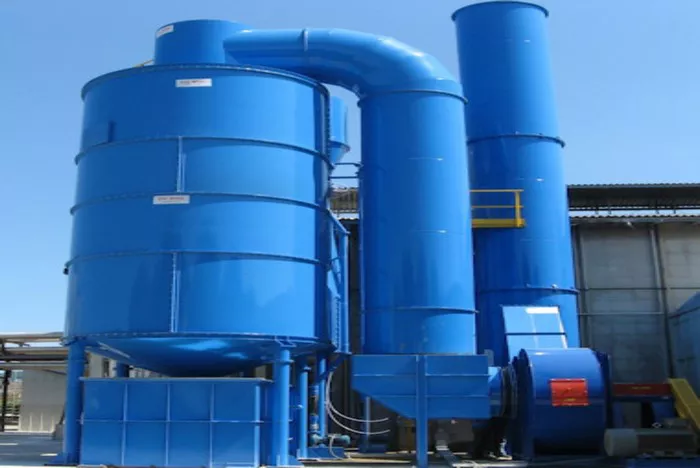Scrubbers are indispensable components in modern industry, widely used in textiles, food processing, healthcare, aviation, and many other fields. Through efficient cleaning action, they help businesses address the accumulation of pollutants, ensuring product quality and production efficiency. This article will delve into the working principles of scrubbers, usage precautions, as well as common problems and their solutions in practical applications.
Working Principles of scrubbers
Scrubbers typically include water-based washing equipment and solvent-based washing equipment. Water-based washing equipment mainly utilizes water as a solvent, achieving cleaning effects through mechanical action on dirt. Solvent-based washing equipment uses specific solvents to clean specific types of pollutants.
Water-based Washing Equipment
Water-based washing equipment usually consists of components such as motors, inner drums, and control systems. The motor drives the inner drum to rotate via a variable speed belt, causing relative movement between clothes and water, utilizing the flow of water and friction of clothes to remove stains.
Solvent-based Washing Equipment
Solvent-based washing equipment is more complex, often involving various technologies such as ultrasonic cleaning and steam cleaning. Ultrasonic cleaning utilizes the cavitation effect generated by high-frequency vibration to remove stains, while steam cleaning decomposes stains with high-temperature steam, aided by mechanical force for removal.
Precautions for Use
When using scrubbers, users need to follow a series of operating procedures and safety measures to ensure cleaning effectiveness and equipment safety.
1. Equipment Selection: Choose the appropriate washing equipment based on the material of the items to be cleaned and the type of stains.
2. Pre-treatment: For stubborn stains, pre-treatment such as soaking or spraying cleaning agents may be necessary.
3. Operating Procedures: Strictly follow the operation manual of the equipment to avoid equipment damage or safety accidents due to improper operation.
4. Use of Cleaning Agents: Properly mix and add cleaning agents, distinguishing between different types of cleaning agents.
5. Equipment Maintenance: Regularly inspect and maintain the equipment, replace vulnerable parts promptly, and keep the equipment in good condition.
Common Problems and Solutions
During actual use, equipment malfunctions and poor cleaning effects may occur. Here are solutions to several common problems:
1. Equipment Malfunction: If the equipment suddenly stops working, first check whether the power cord and control system are normal. If there are abnormalities, promptly contact professionals for repairs.
2. Poor Cleaning Effect: If items still have obvious stains after cleaning, check whether it’s due to insufficient or improper concentration of cleaning agents. In this case, supplement or adjust the cleaning agents accordingly.
3. Equipment Maintenance: For routine equipment maintenance, it should be done at least every six months, including cleaning filters and checking fasteners, among other tasks.
Conclusion
The correct use and maintenance of scrubbers not only affect cleaning effectiveness but also impact the production safety and economic benefits of businesses. This article aims to provide a comprehensive guide on the use of scrubbers, helping users better understand and utilize this technology. By following the principles and recommendations above, you can effectively prolong the service life of scrubbers and ensure that each cleaning achieves the expected results.

